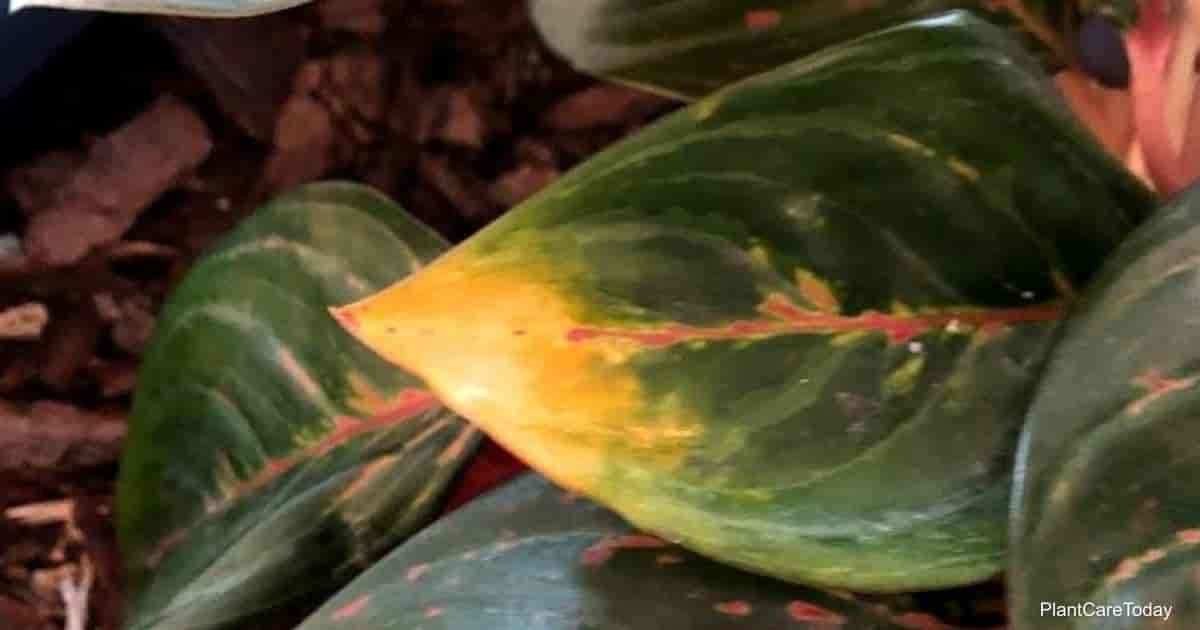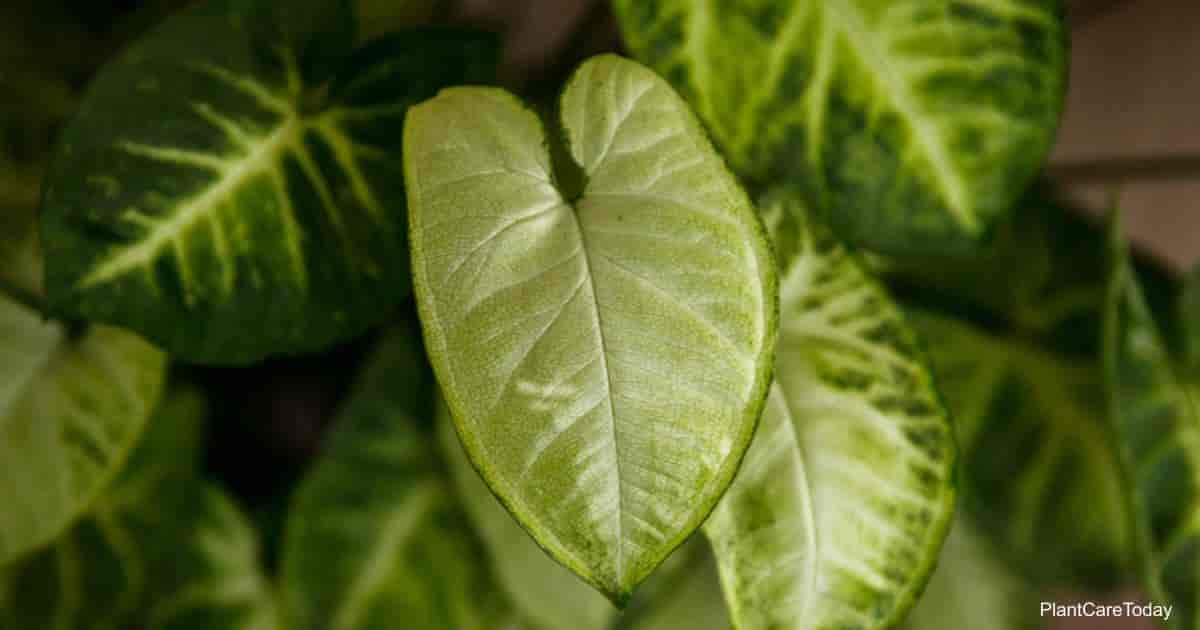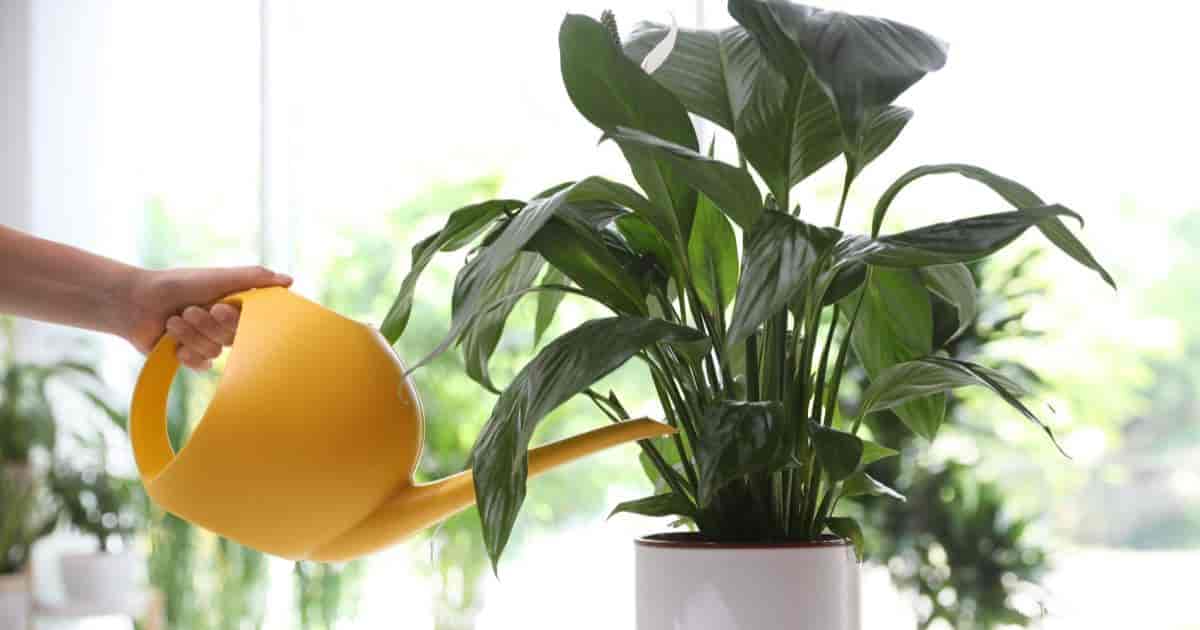Peace lilies are among those traditional garden plants that are now increasingly more commonly indoors.
It has a tolerance to lower light levels, is forgiving of the occasional bit of neglect, and brightens any room when in full bloom. It also helps that peace lily care is easy!
But just because peace lilies can handle neglect doesn’t mean you want to give them the wrong amount of water.
In fact, underwatering or overwatering a Spathiphyllum can lead to most health problems your lily might face, such as the following:
- Fungal infections
- Root rot
- Leaf or bud drop
- Other infestations
Here’s everything you need to know to ensure your peace lily gets the right amount of water and how to tell when it actually needs it.
How Much And How Often To Water Peace Lilies?
Watering your peace lily is a snap using the soak-and-dry method, which will tell you exactly when and how much water to give every time.
However, it’s also essential to understand what kind of water to use and why traditional watering methods may actually do more harm than good.
Why Proper Watering Is Vital?
If you miss a watering here or there, it’s usually not a big deal.
However, repeatedly failing to give the plant enough water, especially in drought conditions, can lead to your peace lily being unable to transpire.
Transpiration is a process similar to sweating and accounts for more than 97% percent of the water the plant absorbs.
During transpiration, the plant excretes water through special pores, found mainly on the undersides of leaves.
The water evaporates, leading to increased local humidity.
However, if the plant doesn’t have enough water, it may start dehydrating while trying to transpire, causing the plant’s leaves and flowers to wilt.
This wilting can eventually lead to leaf or bud drop.
Conversely, overwatering your plant can invite fungal infections in the soil and the plant itself.
It can also lead to root rot, a deadly disease caused by several different strains of bacteria and fungi.
Overwatering has also been linked to an increased risk of infestation, especially from fungus gnats (which feed on soil-borne fungi) and piercing insects such as aphids or mealybugs.
Not only will these many diseases and infestations cause serious harm to your plant and potentially spread to other nearby plants, but they also cause plenty of aesthetic damage.
NEVER Water On A Schedule
When watering most plants, the most critical rule is to throw away the calendar.
Think about this: You don’t have an alarm on your watch that tells you to drink a specific amount of water at a particular time, do you?
And do you not sometimes get thirsty when it’s hotter, or you’ve been working out, while you often are less thirsty if it’s cool and rainy?
Plants are much like people, even though we rarely stop to consider the similarities.
Plants transpire while we sweat, and they’ll get thirstier in hotter weather than in cooler weather.
In other words, you can’t expect your plant to drink a set amount of water given on a schedule for the same reasons you don’t have a schedule or dring specific amounts every time.
This lapse in logic is the cause for almost every instance of improper watering out there, except soil quality interfering with good drainage.
But there’s a technique known as the soak-and-dry method, which not only lets you know when your plant is thirsty BEFORE it starts wilting, but it will also tell you when the plant has enough water indoors and outdoors.
Choosing The Best Water
One thing to remember is that the water quality can affect your plant over time.
Tap water should be avoided at all costs, as it contains many toxic chemicals and mineral salts that slowly poison your plant.
It’s possible to use tap water if you allow the water first to sit uncovered for 12 to 24 hours so the fluoride and chlorine gasses can escape, then run it through a quality water filter to remove harmful mineral salts.
By far, the best option is to collect and use natural rainwater, which has ionized particles that benefit plants greatly/
Distilled water (sometimes called baby water) is a wonderful alternative, as it’s already been purified of the harmful substances found in tap water.
You can occasionally add a bit of hydrogen peroxide to distilled water to give it properties similar to natural rainwater.
Finally, some people like to use untreated aquarium water, as the water provides some natural fertilizers and lacks the dangerous salts and gasses in tap water thanks to aquarium filtration devices.
No matter what kind of water you choose, always ensure it’s room temperature, so you don’t shock the plant.
How To Tell Your Peace Lily Is Thirsty?
You can use fancy devices to check soil moisture, but the quick and easy way is called the finger method.
This is exactly what it sounds like – sticking your finger in the soil to see how far down the moisture level is.
For peace lilies, you’ll want to water when the soil is dry, approximately 1” inch deep.
This generally equates to the first knuckle on the average adult hand, but you can always put your finger against a ruler to get a better idea of how much your finger equals an inch.
Thi method takes away the guesswork because it takes only a moment (you can even do the test while walking past your plant) and automatically accounts for all sorts of environmental variables such as temperature, humidity, and direct sunlight levels.
Using The Soak-And-Dry Method
Once you know it’s time to water your plant, the soak-and-dry method is a cinch.
Begin pouring your water slowly and evenly, working your way around the plant.
Try not to get the foliage wet or pour too quickly, as you want the soil to soak it up as you go.
Two potential signs to look out for will tell you when to stop watering.
If moisture begins seeping from a container’s drainage holes, you know the soil is saturated.
Likewise, in both potted and garden plants, you’ll know the soil is saturated when the ground can no longer absorb water at the same rate you’re pouring.
When you see either of these signs, simply stop watering, and your plant will have the amount of water needed.
Credit : Gary Antosh (https://plantcaretoday.com/watering-peace-lily.html)





